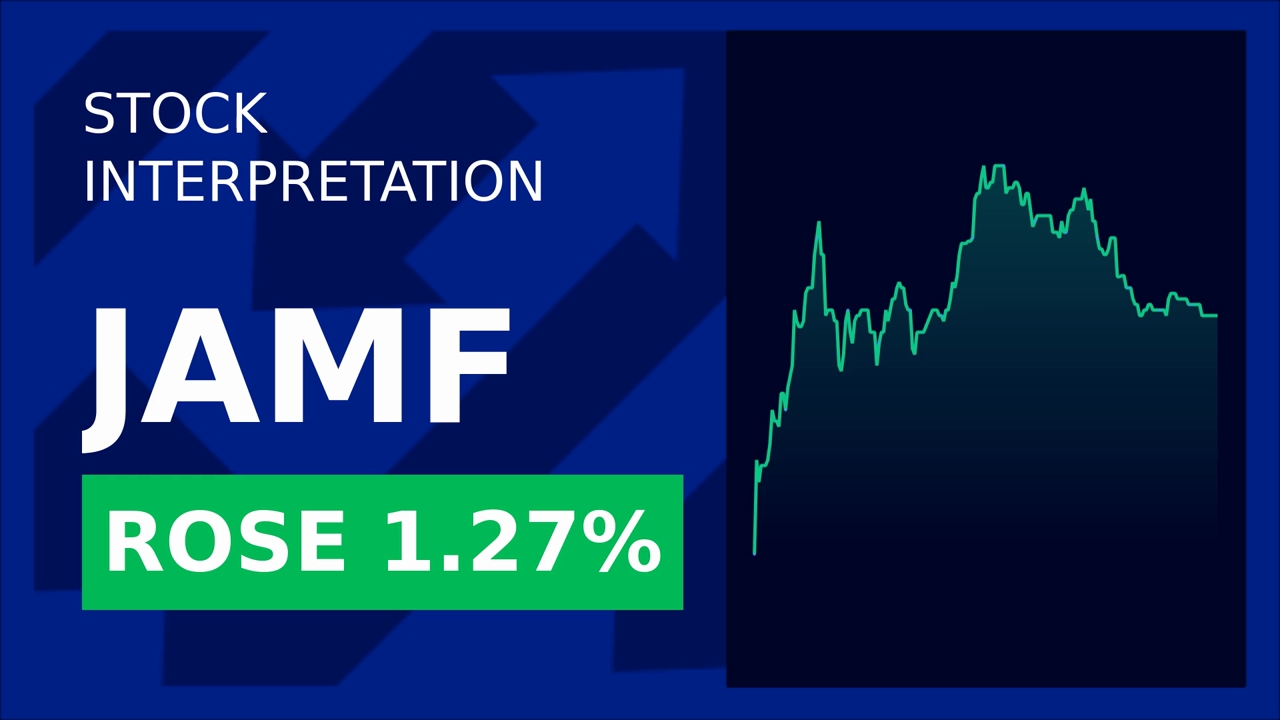Jamf's Q1 2025 Earnings: Growth Amid Headwinds in Apple-Centric IT Management
Jamf Holding Corp. (NASDAQ: JAMF) reported mixed results for its Q1 2025 earnings, showcasing strong revenue growth and strategic momentum in its Apple-focused IT management platform, while also highlighting operational and macroeconomic challenges. The company’s ability to balance its expanding footprint in education and enterprise sectors with lingering cash flow and retention concerns sets the stage for a nuanced investment outlook.

Financial Highlights: A Solid Foundation, But Room for Improvement
Jamf’s top-line growth remained robust, with revenue rising 10% year-over-year (YoY) to surpass its internal outlook. Non-GAAP operating margins expanded to 22%, a testament to its recurring revenue model, which now accounts for 98% of total revenue (up from 97% in 2024). However, unlevered free cash flow margin dipped to 12.3%, down from 14% in Q1 2024, due to timing of billings and collections—a temporary issue, but one that underscores cash flow management challenges.
The company’s Annual Recurring Revenue (ARR) grew 9% YoY to $658 million, driven by strong new logo bookings in both commercial and education markets. Security-focused ARR surged 17% to $162 million, reflecting heightened demand for Jamf’s solutions in industries like healthcare and retail, where mobile-centric security is critical.
Strategic Momentum: Expanding into New Markets and Capabilities
Jamf’s product launches and acquisitions are positioning it to capitalize on long-term trends in Apple device adoption. The introduction of Jamf for Mac and Jamf for K-12 platforms has enhanced its ability to serve large enterprises and schools, respectively. Meanwhile, the acquisition of Identity Automation—a leader in identity management for Apple ecosystems—adds 500+ education customers and expands Jamf’s reach into industries like healthcare, where dynamic security policies are essential.
CEO John Strossel emphasized the potential for Identity Automation to address “context-aware security” in commercial sectors, such as retail (e.g., cashier devices) and healthcare (e.g., medical staff tablets). This aligns with Jamf’s broader vision of becoming the “standard for Apple ecosystem management,” a niche it dominates with over 100,000 enterprise customers.
Challenges and Risks: Retention, Currency, and Mac Headwinds
Despite the positives, several risks temper optimism:
1. Flat Net Retention Rate: At 104%, the rate has stagnated for two consecutive quarters, signaling difficulty in upselling existing customers to higher-tier plans. This contrasts with peers like Microsoft, which routinely report retention rates above 110%.
2. Currency Headwinds: A projected $2–$3 million revenue drag from foreign exchange fluctuations for the remainder of 2025, particularly in European markets.
3. GuruFocus Warnings: Four red flags (not detailed in public disclosures) could relate to high debt levels, declining margins, or stock volatility. JAMF’s current debt-to-equity ratio is 0.8x, elevated for a software firm but manageable.
Q&A Insights: Prioritizing Enterprise and Education Dominance
Executives reiterated their focus on vertical markets:
- Identity Automation Beyond Education: Strossel highlighted healthcare and retail as key targets, citing Identity Automation’s ability to dynamically adjust security policies based on device location or user role.
- Product Differentiation: Jamf for Mac targets large enterprises with advanced security features, while the Jamf business plan caters to smaller businesses—a clear strategy to avoid cannibalization and maximize market coverage.
Conclusion: A Niche Leader with Long-Term Appeal, But Near-Term Caution
Jamf’s Q1 results underscore its dominance in Apple-centric IT management, a niche where its recurring revenue model and product innovation provide defensible advantages. The 17% growth in security ARR and strategic moves like the Identity Automation acquisition position it to capitalize on rising demand for mobile security.
However, the flat net retention rate and cash flow issues suggest execution risks that could limit short-term upside. Investors should also monitor macroeconomic factors, as the company’s cautious revenue outlook and currency exposure highlight vulnerability to global economic volatility.
For long-term investors, Jamf’s 98% recurring revenue and expanding addressable market (e.g., schools, healthcare) make it a compelling play on Apple’s enterprise growth. Short-term traders, however, may want to wait for clearer signs of margin stabilization and retention improvement.
At current valuations—JAMF trades at 13x forward revenue, below its five-year average of 18x—the stock appears attractively priced if the company can resolve its near-term headwinds. The path to outperformance hinges on execution in high-growth verticals like healthcare and retail, where its Apple-first platform holds unique advantages.
In short, Jamf’s Q1 results are a reminder that even niche leaders must navigate operational and macroeconomic hurdles. For investors willing to look past the noise, its strategic moves signal potential for sustained growth in a fragmented IT management landscape.

_442a2dcc1749832873286.jpeg)
_e68fac6d1749831664430.jpeg)







